| 1 | Ottoman viper |
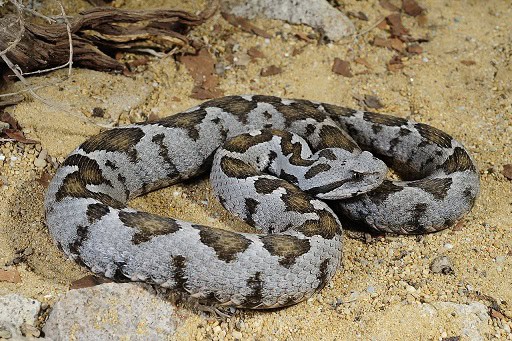
Probably the snake responsible for the most venomous bites in Turkey. This is a snake which is capable of eating scorpions, and has an aggressive attitude towards human interlopers.
The Ottoman viper (Montivipera xanthina) is one of Turkey’s most common venomous snakes, particularly in the western half. They also cross into extreme eastern Greece, and reach a maximum of 140cm, with an average of 70-95cm. This species has flexible habitats, and doesn’t shy away from human-controlled areas. In the wild, they inhabit rocky mountain steppes and Mediterranean shrubland, but they also appear in rural gardens and cultivated land like olive groves.
Montivipera xanthina venom has a high LD50 toxicity score for a viper, ranging from 0.42 to 0.25mg in mice. By contrast, a cottonmouth achieves just 2.08mg, while a puff adder achieves 0.4-2.0mg. The lethal dosage in humans has been calculated at 40mg, but this is where the Ottoman viper falls down, for their average yield per bite is unusually low at 10mg, which is low even for a snake measuring 80cm.
According to an enormous study involving 4446 Ottoman vipers, the maximum venom yield per bite was a mere 18mg. Ottoman vipers have confirmed human deaths to their name, but not every month, or even every year. Their diet is heavy in rodents, supplemented with birds and lizards, and occasionally scorpions if the urge happens to strike.
| 2 | Ring-headed dwarf snake |
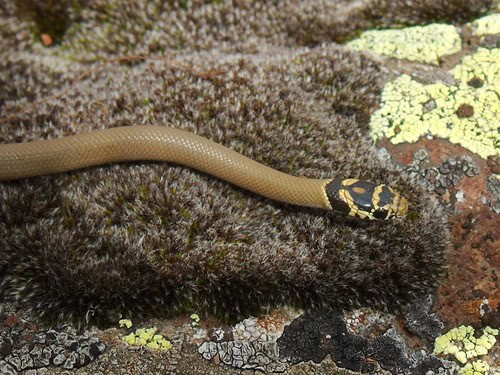
A small, shy species which is very difficult to find. The ring-headed dwarf snake (Eirenis modestus) reaches a maximum of 70cm and is commonly found lurking under rocks and slabs of stone. Of all Turkish snakes, this is one of the easiest to walk right past and not notice. This is a non-venomous snake which eats a diet of grasshoppers, beetles, locusts and crickets.
The snake has a clear favourite habitat, as instead of forests, they prefer widen open, sparsely vegetated land with plenty of small shrubs and rocks. Dry mountain steppe is a common spot for them, and very occasionally grasslands and woodlands.
While southwest Turkey has the highest number of sightings, Eirenis modestus is found across virtually the entire country – if you can find them. With their thin pencil width body, few snakes are better at going unseen than the ring-headed dwarf snake. Their hunting strategy is to rest below rocks and eat any insect that strays past them.
Ring-headed dwarf snakes have medium-sized eyes with round pupils, and smooth scales to touch (if you can get close enough). A couple of morphs exist: one with a plain olive colour and no patterns, and a second with small dark blotches on its upper body, which fade away in the lower half. This snake occasionally eats reptiles as well as insects, making up 2% of their diet in a 2007 study.
| 3 | Spotted whipsnake |
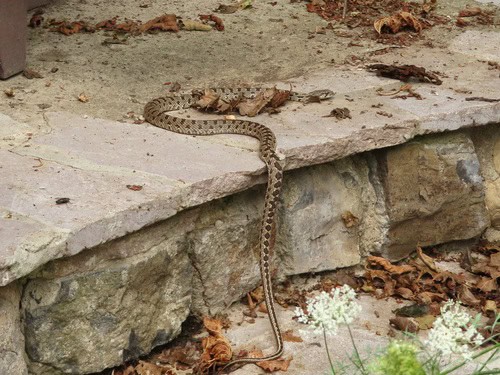
This moderately venomous snake lives in the eastern half of Turkey, mainly in dry, arid realms. Across its range, it occupies relatively high altitudes of 1200 to 3600 metres. Spotted whipsnakes (Hemorrhois ravergieri) belong to the same genus as the Spanish horseshoe whipsnake (a super common species), and reach a maximum of 150cm. Rocky hillsides and steppe are perhaps the best place to meet a spotted whipsnake.
This Turkish snake has interesting patterns, as they begin as rounded dark blotches overlaying an olive base. As the tail approaches, these blotches gradually fuse together before forming parallel dark lines. A 1976 report described two bites in Russia. The first victim was bitten on the right hand and experienced swelling which lasted for 72 hours, with local pain persisting for 10 days. The second developed swelling within just 15 minutes, which rapidly spread to cover the entire hand and forearm.
In one strange tale, a female spotted whipsnake was prowling the shifting sands of a dune, when it seized a toad-headed agama. While it feasted, a male spotted whipsnake slithered in, and eagerly coiled around the female. The female snake didn’t care, and continued to swallow the lizard for 10 minutes while the male was coiled around her, taking no notice whatsoever.
| 4 | Central Turkish mountain viper |
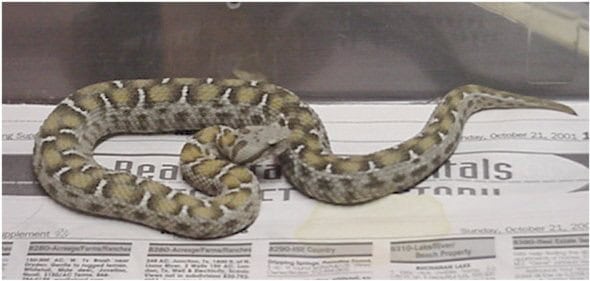
A venomous snake, but one you’re very unlikely to meet. In fact, scientists would probably turn up on your doorstep and demand a full report if you did. The Central Turkish mountain viper (Montivipera albizona) is extremely rare, with an estimated surviving population of less than 2500. It lives exclusively in high altitude mountain areas of central Turkey, at 1300-2200 metres, and is divided into northern and southern pockets, with further divisions inside these rugged realms. It’s estimated that no local population contains more than 250 individuals.
This super-rare species was only discovered in 1990. Threats to its existence include livestock farming and ranching, mining and quarrying, and the planting of agricultural crops. Vipera albizona reaches a maximum length of just below 78cm, and can be found on dry, rocky mountains slopes and fields. Rather than forests, they can be found on open slopes with plenty of thorny bushes, and plenty of sun exposure.
Visually, this species is distinguished from the other Montivipera members in Turkey by its spinal zigzag. This is extremely wide and rounded (see above), and has a reddish-orange colour. This zigzag was consistent and barely varied between 21 individuals caught, according to a 1994 study. This species also has a shorter tail, accounting for 7.5-8.8% of its body length, versus 9.2-9.8% in the more common Ottoman viper.
| 5 | Smooth snake |
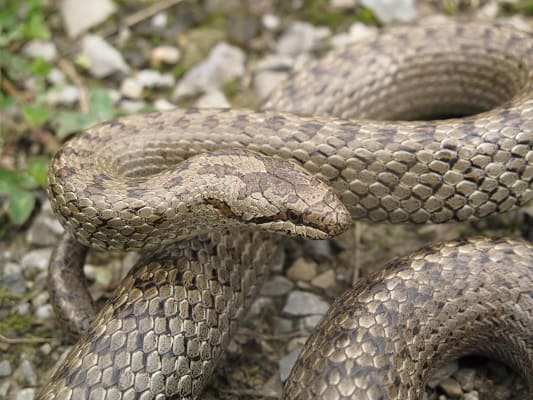
A non-venomous snake which is easily identifiable by a black, butterfly shaped marking atop its head. Smooth snakes are extremely widespread in Eurasia, ranging from southern England to northwest Kazakhstan. Within Turkey, they’re abundant in almost the entire north, where they cause little grief for the human populations.
Smooth snakes average at 70cm, with a maximum of 92cm (recorded in Russia). They’re harmless to live alongside, unless perhaps you pick them up. Smooth snakes have an unpredictable personality, as one minute, they’ll rest calmly in your hands, before randomly exploding with aggression and biting painfully. Their bite can be firm and difficult to dislodge as well.
Smooth snakes are most common in tangled undergrowth areas, hunting for lizards, their main prey. Their smoothness is related to this habitat, as it prevents their scales from snagging on branches, which could be disastrous: they could be preparing to leap at a meal, or they could be fleeing from a bird predator and get stuck. Smooth snakes are neither venomous nor a true constrictor, preferring to apply a couple of loose coils simply to hold their prey in place, before swallowing carefully.
In northern Turkey, smooth snakes range all the way from the western border with Bulgaria to the eastern regions bordering Armenia. However, they’re completely missing from anywhere in the south.
| 6 | Transcaucasian ratsnake |
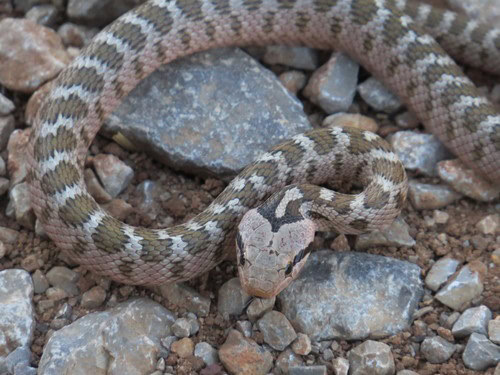
A relative of Italy’s Aesculapian snake, but much shorter and harder to find. The Transcaucasian ratsnake (Zamenis hohenackeri) reaches a record of 85cm and is fairly dull in colour, with a grey base of scales. It lives far away from bustling Ankara and metro stations, as its favourite habitats are dry mountain hillsides, with an abundance of rocks and the occasional isolated tree. They also appear in spacious forests and river valleys, and near remote villages.
One of the Transcaucasian ratsnake’s special features is its huge range of altitudes. Across their range, they’ve been found from 100 to nearly 3000 metres. Away from Turkey, they’re found in Lebanon to the south, and Georgia, Azerbaijan and Armenia to the northeast.
This is an extremely mysterious snake, as very little research has been conducted. Zamenis hohenackeri is apparently extremely difficult to keep in captivity, requiring careful year round control of temperatures. For example, this keeper recommends 4-5 months at 5-8C to allow hibernation, probably to mimic conditions in their rocky steppe habitats. Transcaucasian ratsnakes are very rare in worldwide collections, and even in the wild, you should count yourself lucky to meet one.
| 7 | Narrow-striped dwarf snake |
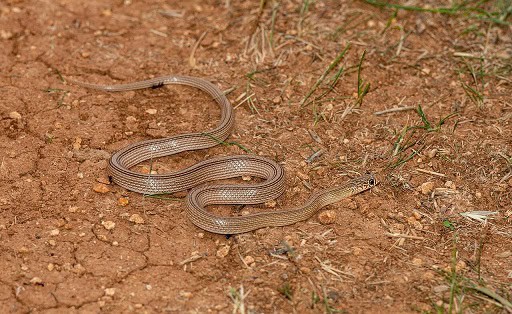
A cousin of the ring-headed swarf snake, this harmless species is found mainly in southern Turkey, as well as Lebanon and Israel. Narrow-striped dwarf snakes (Eirenis decemlineatus) are simple to distinguish due to their namesake stripe, which runs down their spine and is dark overlaid on an olive base. As juveniles, they have two additional stripes on their flanks, which fade with age.
Rather than barren steppe, this species is mainly found in sparsely populated oak and pine forest. Manmade habitats they enjoy include rural gardens and orchards, but never concrete cities. Like its cousin, Eirenis decemlineatus is an expert at rapid escape, vanishing into dark holes and below rocks without warning. They hate to stray to open ground, as this species is completely defenceless.
Narrow-headed dwarf snakes move by day, but shelter during the hottest part of the day. They prey on a mixture of crickets, centipedes, scorpions and grasshoppers, and their territory is so hot that they usually stay active during winter. This is a smooth and shiny snake rather than keeled and jagged.
At a maximum of 90cm, this southern Turkish species is the longest of the 23-member Eirenis genus. This entire group is a large blind spot of research for snake experts.
| 8 | Red whipsnake |
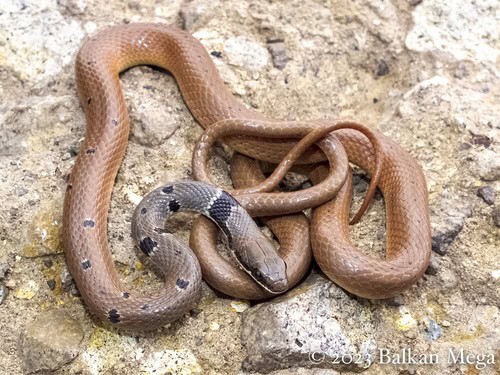
Not the most dangerous or longest snake in Turkey, but quite possibly the fastest. The red whipsnake (Platyceps collaris) measures up to 111.9cm, and can vanish over rock slabs and into adjacent shrubbery like a bullet being fired.
Red whipsnakes hug the Mediterranean coast of Turkey, making the south and southwest their main base, skipping the north and east. This might be the easiest Turkish snake to recognise as well. Red whipsnakes have a brick red body contrasting against a dense black neck collar bordered by snowy white. Their body has further black blotches, again bordered by white, which decrease in frequency before vanishing on the lower body. The Latin name of collaris references their black neck collar.
Red whipsnakes are most common in Mediterranean landscapes such as plantations, rural gardens and pasture land. Their extreme speed is utilised for hunting, for outrunning escaping lizards and seizing them in their jaws. They swallow their prey not with a silencing venom, but through sheer determination. Their lack of restraint means that they occasionally end up as roadkill in Turkey. Red whipsnakes average at 70cm, but the longest two of all time measured 112.0cm and 111.9cm, and were found in Jerusalem, Israel.
| 9 | Ocellated mountain viper |
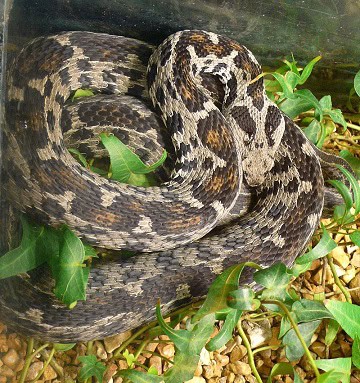
Perhaps the rarest snake in Turkey. The ocellated mountain viper (Montivipera wagneri) is listed as critically endangered by the IUCN.
This is essentially an eastern equivalent of the central Turkish mountain viper, and belongs to the same Montivipera genus. Like its cousin, Montivipera wagneri requires cooler rocky slopes for its habitats, and cannot survive in parched arid areas lower down. Hence, they exist only in mountain ranges at 1600 metres and higher, in eastern regions of Turkey such as Kars and Mus provinces.
The ocellated mountain viper is believed to have declined by 80% in recent decades, due to collection by reptile enthusiasts and habitat destruction. A planned megadam in Turkey’ Aras river valley is forecast to decimate their existing range by 80%. The species was always rare, as it was believed to be extinct for 140 years before its rediscovery in 1983.
However, things may be slightly less dire than once thought, as a survey published in 2020 discovered them in Tunceli Province for the first time, extending their range 250km westwards. Additionally, St Louis Zoo in Missouri managed to hatch 9 captive ocellated mountain vipers back in 2013. This species peaks at 95cm, and is generally found in rocky grassland with plenty of sun exposure, and epic views of the valleys opposite.
| 10 | Red-bellied racer |
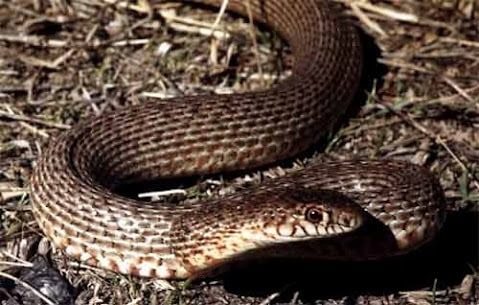
One of Turkey’s longest snakes. The red-bellied racer (Dolichophis schmidti) is capable of reaching 250cm, with an average of 140-160cm. This species likes to hang out in crumbling stone ruins, as well as dry hillsides and shrubby fields with plenty of rocks. A Turkish villager failing to tend to his garden could result in a red-bellied racer taking residence in it.
This species is found in central and eastern Turkey, skipping the civilised Mediterranean coast. Despite its brute size, the red-bellied racer rarely attacks, preferring to flee at high speeds if it feels slightly flustered. Combined with their liking for open hillsides, this makes Dolichophis schmidti very difficult to get close to. This is also a naturally sparse species, which rarely has high populations in any one region.
Red whipsnakes are fond of rats for their meals, as well as ground-nesting birds. While they prefer drier, rockier terrain, they avoid downright arid landscapes.
This is an egg-lying species, pumping out batches of 7-12 in July or early August, which hatch from mid-September onwards. Red whipsnakes can reach 1900 metres above sea level, and further afield, they inhabit Armenia, Azerbaijan, Iran, and possibly Syria. This is a mysterious snake whose territory is yet to be fully mapped out. Not surprisingly, research in Syria has been hard to conduct over the last 15 years.
